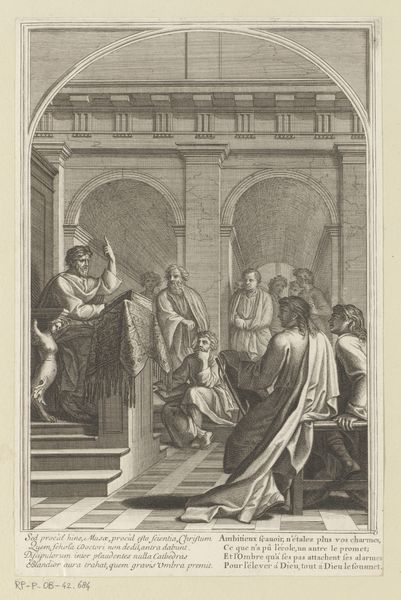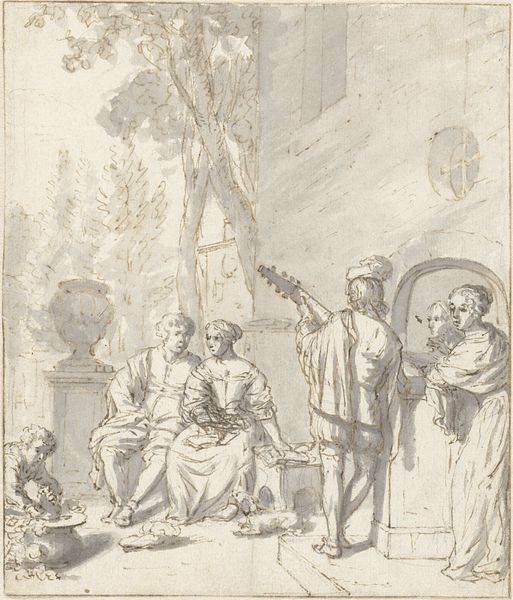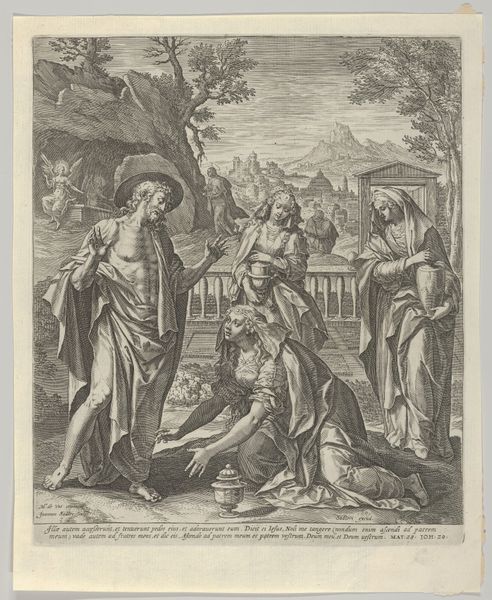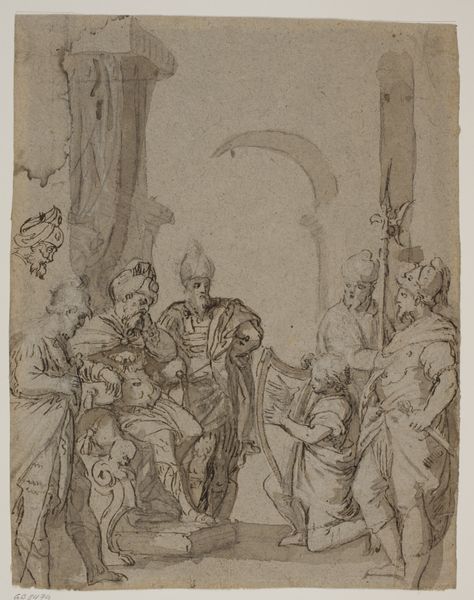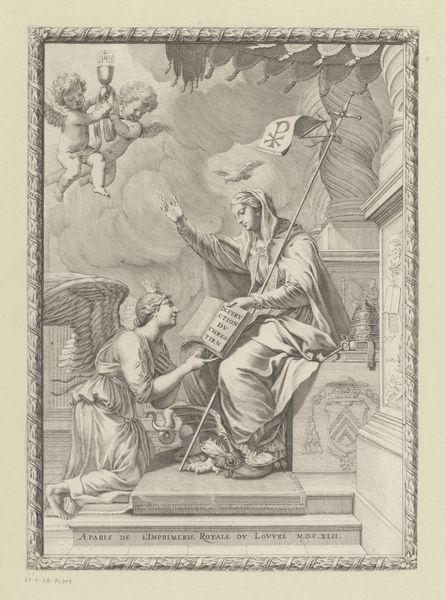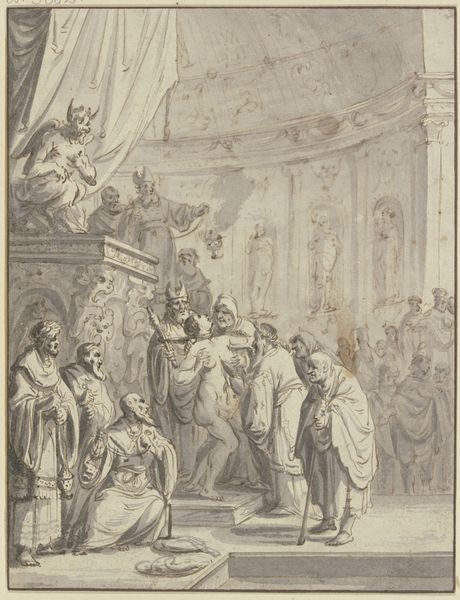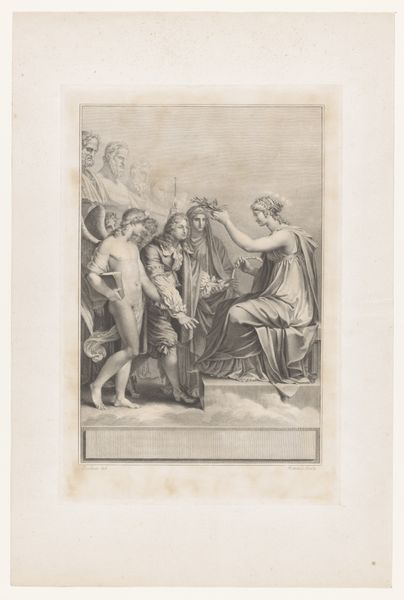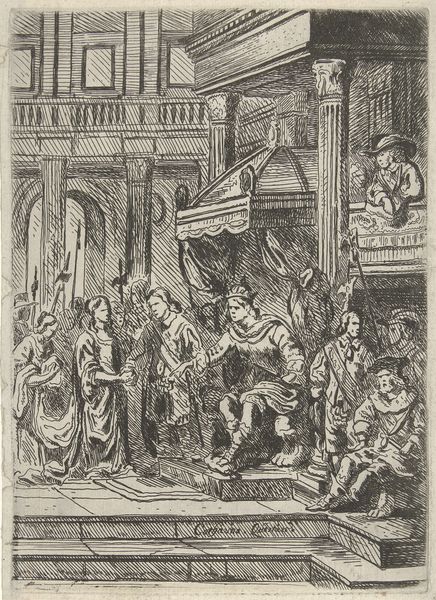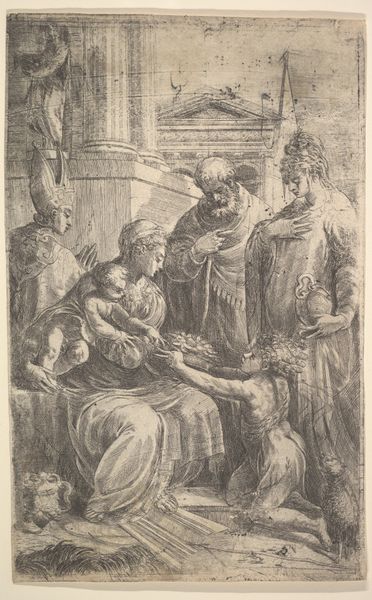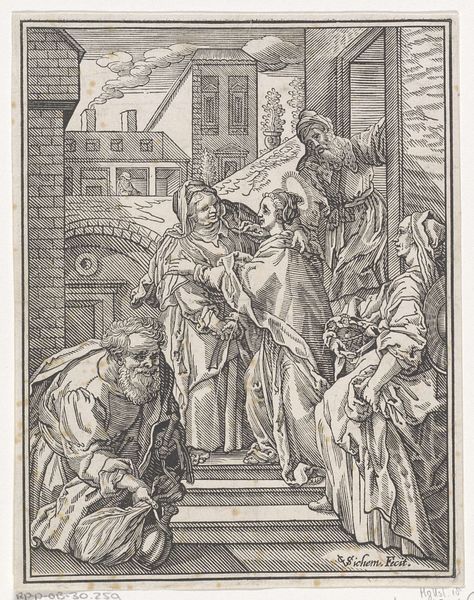
drawing, print, paper, chalk, charcoal
#
drawing
#
toned paper
#
light pencil work
# print
#
pencil sketch
#
paper
#
personal sketchbook
#
coloured pencil
#
coffee painting
#
pen-ink sketch
#
chalk
#
france
#
water
#
watercolour illustration
#
charcoal
#
pencil art
#
watercolor
Dimensions: 357 × 263 mm
Copyright: Public Domain
Curator: Let's turn our attention to François Verdier's drawing, "Presentation of the Virgin," housed right here at the Art Institute of Chicago. It's undated, but the style hints at a 17th-century hand. Editor: It’s evocative! My initial sense is one of pious solemnity mixed with almost airy grace, given those cherubic figures floating above. Curator: Precisely. Let's consider the toned paper itself. Its very texture contributes to that sense of depth, doesn’t it? Verdier employed chalk, charcoal, and perhaps even a bit of watercolor, judging by the light pencil work throughout, which creates a fantastic sense of layering and light. I wonder, was it a preparatory study, a demonstration piece, or an end in itself? Editor: I'm drawn to the clear visual narrative being presented. We have the young Mary, a symbol of purity and devotion, being offered within the temple, indicated by architectural cues of pillars and steps. The Bishop extending his hands to the Virgin symbolizes sacred acceptance. It connects us with traditions of faith and divine purpose, a pivotal point in the narrative leading up to the Incarnation. It's very staged and intentional. Curator: Staged yes, but economical in execution. Think of the accessibility of the materials and the labor input versus a large oil painting. Its power rests in its suggestive sketchiness, more an evocation of an event than a rigid declaration. How it democratized access to religious iconography in comparison to lavish altar pieces! The quick charcoal lines belie its profound impact, considering its potential as an easily disseminated image. Editor: While you consider production, I reflect upon its iconographic richness! See those hovering angels, carrying garlands – an allusion to Mary's future glorification? Verdier isn't just depicting a single moment, but an entire trajectory of significance in Mary's life and her role in the salvation narrative. Curator: I concur about the trajectory. Verdier uses readily available materials like chalk and paper to convey something both intimate and universally meaningful, bridging material constraints and cultural significance, revealing more than a quick sketch. Editor: Exactly, through a delicate dance of symbols, we glimpse echoes of centuries of veneration and artistry. Curator: A testament to how art history bridges the terrestrial and celestial realms through art production.
Comments
No comments
Be the first to comment and join the conversation on the ultimate creative platform.
